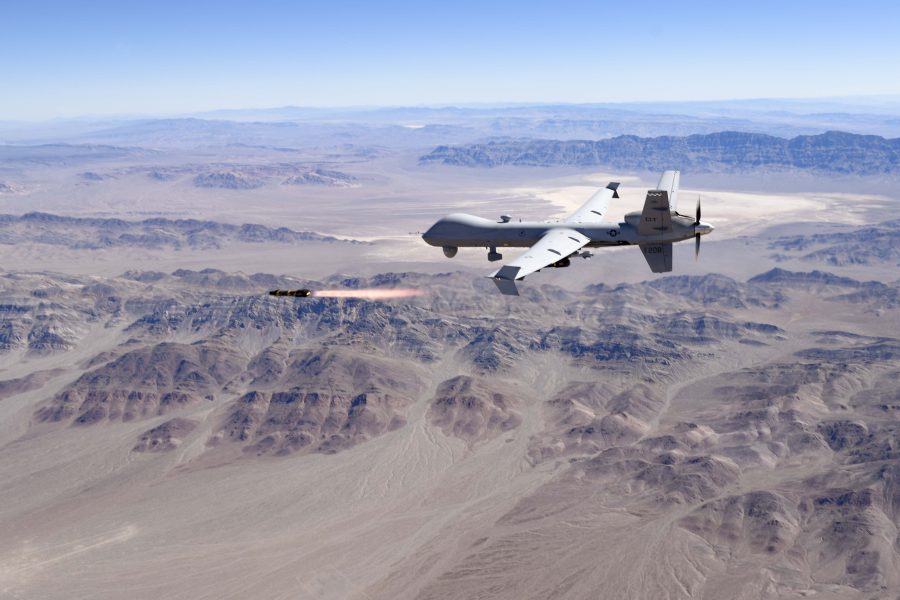The U.S. conducted a drone strike in Iraq on Dec. 3, as the American troops there continue to be targeted by Iranian-backed militants, U.S. officials said.
The strike took place near Kirkuk as the militants were preparing to attack U.S. troops in northern Iraq, a U.S. official told Air & Space Forces Magazine.
A half-dozen airstrikes have been carried out by the U.S. against Iranian-aligned militias in Iraq and Syria in roughly five weeks, but this appears to be first one known to have been carried out by a drone. Images posted on social media of the aftermath show the remnants of a variant of a Hellfire missile amid bodies of dead fighters. Five militants were killed and the drone they were preparing to launch at U.S. forces was destroyed, Deputy Pentagon Press Secretary Sabrina Singh said. The U.S. notified Iraqi security forces of the strike and they responded and confirmed the deaths, she added.
American forces in Iraq and Syria have come under attack by militia groups at least 76 times since Oct. 17, a U.S. military official said.
At first, the U.S. limited its strikes to Iran-backed militias in Syria, even when some of the militia attacks occurred in Iraq, to avoid roiling politics in Baghdad. But now the U.S. appears to be more willing to take action in Iraq to protect its roughly 2,500 troops in the country.
The militants who were targeted in the drone attack belonged to Harakat Hezbollah al-Nujaba, an Iraqi group founded by the militant leader Akram al-Kabbi, said Michael Knights of the Washington Institute for Near East Policy. That group has been designated as a terrorist organization by the U.S. State Department.
The Biden administration has repeatedly pressed Iraqi leaders to have their forces stop the militia attacks. But the Iraqi government’s seeming inability to do so has prompted the U.S. to take action, to the consternation of the authorities in Baghdad.
“These defensive strikes on attack cells provide very close connection between crime and punishment which makes it very easy for the Biden administration to claim it is self defense,” Knights said.
In their effort to encourage the Iraqis to act, President Biden, Secretary of Defense Lloyd J. Austin III and Secretary of State Antony Blinken have called Iraqi prime minister Mohammed Shia al-Sudani.
“The secretary called on the Iraqi government to fulfill its commitments to protect all installations hosting U.S. personnel at its invitation and to pursue those responsible for attacks on U.S. personnel in Iraq,” the State Department said in a readout of Blinken’s Dec. 1 call with Sudani.
The Iraq attack was not the only military action the U.S. took Dec. 3. The U.S. military also responded when Houthi rebels in Yemen launched missiles and drones at ships in the Red Sea.
The USS Carney guided-missile destroyer shot down multiple drones and missiles in the span of a few hours as it attempted to come to the aid of the several commercial vessels in distress, according to U.S. Central Command (CENTCOM).
“As we are working to stabilize the region, Iran is raising tensions,” Austin said during a speech at the Reagan National Defense Forum in Simi Valley, Calif. on Dec. 2. “And after attacks against U.S. personnel in Iraq and Syria, our forces repeatedly struck facilities in Iraq and eastern Syria used by Iran’s IRGC and by militias affiliated with Iran. We will not tolerate attacks on American personnel. And so these attacks must stop. And until they do, we will do what we need to do to protect our troops—and to impose costs on those who attack them.”
